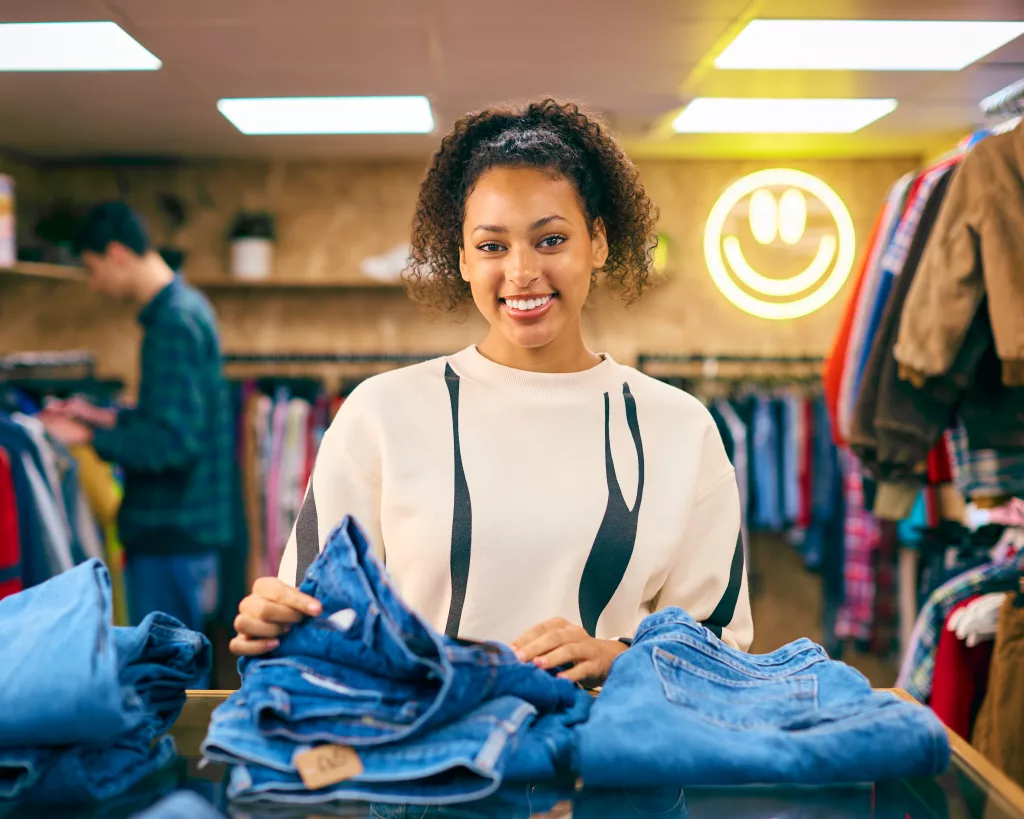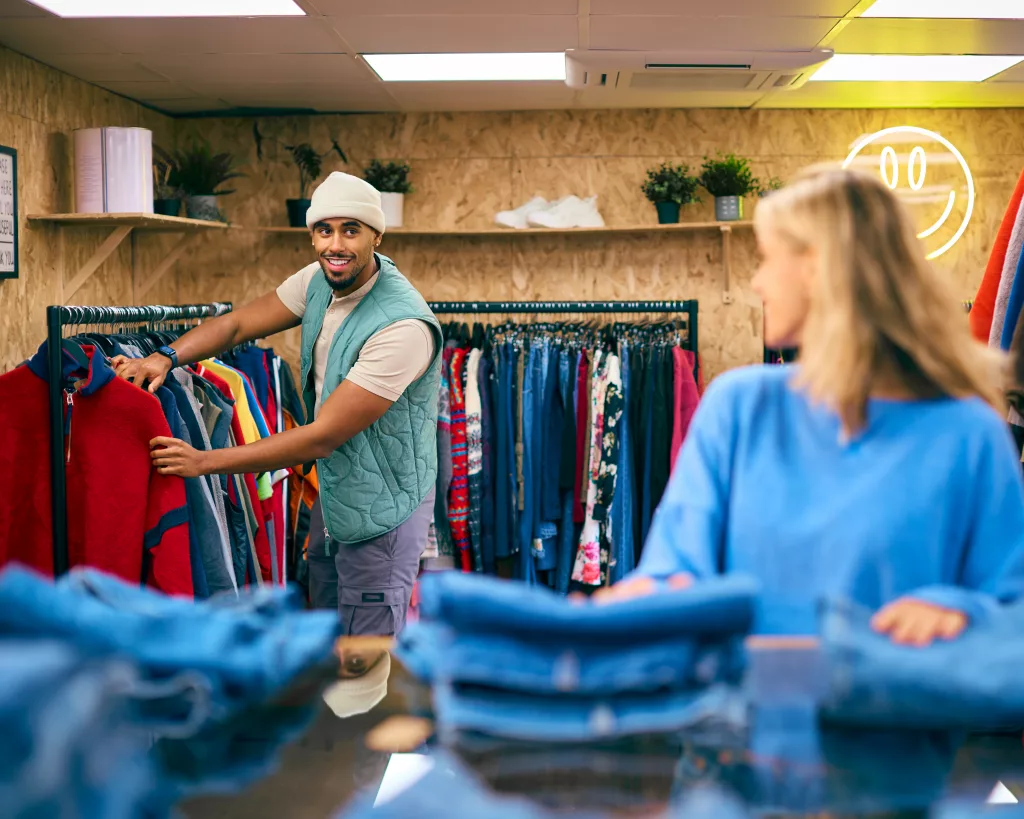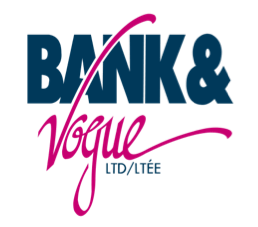The second-hand wholesale industry and its goals of sustainability, cost-consciousness, and circular economy initiatives become central to global consumption patterns. At Bank & Vogue, we’ve spent decades helping partners thrive in the used goods space, whether through sourcing bulk used clothing, footwear, or collaborating on innovative upcycling solutions. As we step into 2025, these 7 key statistics highlight just how vital the second-hand wholesale sector continues to become:
1. The Global Second-Hand Apparel Market Will Reach $350 Billion by 2025
According to ThredUp’s Resale Report, the global second-hand apparel market is expected to triple in value from 2020 levels, hitting an estimated $350 billion USD by the end of 2025, and $367 billion by 2029.
2. Used Goods Now Represent 10% of Global Fashion Sales
Used clothing, footwear, and accessories now account for over 10% of all fashion sales globally, reflecting a shift in consumer mindset from ownership to access and sustainability.
3. 70% of North American Consumers Planned To Buy Second-Hand in the Past Year
More than 70% of consumers globally planned to buy used goods in 2024, according to eBay’s 2024 Recommerce Report, released in May. Additionally, 86% of shoppers surveyed had bought or sold a pre-loved item in the last 12 months, with Gen Z and Millennials leading the charge.
4. Synthetic Fabrics & Microplastics In Oceans
Synthetic fabrics like polyester shed tiny plastic fibres during washing, which eventually make their way into oceans. Around 35% of all microplastics in the ocean come from laundering synthetic textiles.
Each year, about 500,000 tons of microfibers are released into the ocean through washing clothes, an incredible impact from something that is too small to see.
5. Clothes Are Thrown Away in as Little as 7 Wears
In recent years, data shows that clothing is worn only 7 to 10 times before being thrown away, a decline of more than 35% in just 15 years. This puts enormous pressure on the already unsustainable and wasteful process behind fast fashion.
6. 55% of Gen Z Has Rented Clothing in the Past
With high prices, inflation increasing, and Gen Z being more conscious of their day-to-day products and practices, clothing rental services and businesses have taken off, largely led by the Gen Z population.
Whether it’s for prom, a wedding, or even a special event, rented clothing is becoming the go-to option for “wear-it-once” scenarios.
7. Carbon Emissions Reduction by 25% with Secondhand
Buying secondhand reduces the environmental impact of fashion buying, and wearing secondhand clothing instead of new reduces carbon emissions by an average of 25%.
In 2025, make secondhand clothing a bigger component of your wardrobe and help contribute to increasing the average.
Ready to Thrive in 2025’s Second-Hand Boom?
Whether you’re a thrift retailer, fashion brand, or logistics partner, the statistics speak for themselves: the second-hand wholesale industry is no longer niche; it’s the future.
—
At Bank & Vogue, we help businesses like yours tap into sustainable supply chains, reliable sourcing, and global resale opportunities.
Get in touch with our team today to discover how we can help you grow with second-hand in 2025 and beyond.








